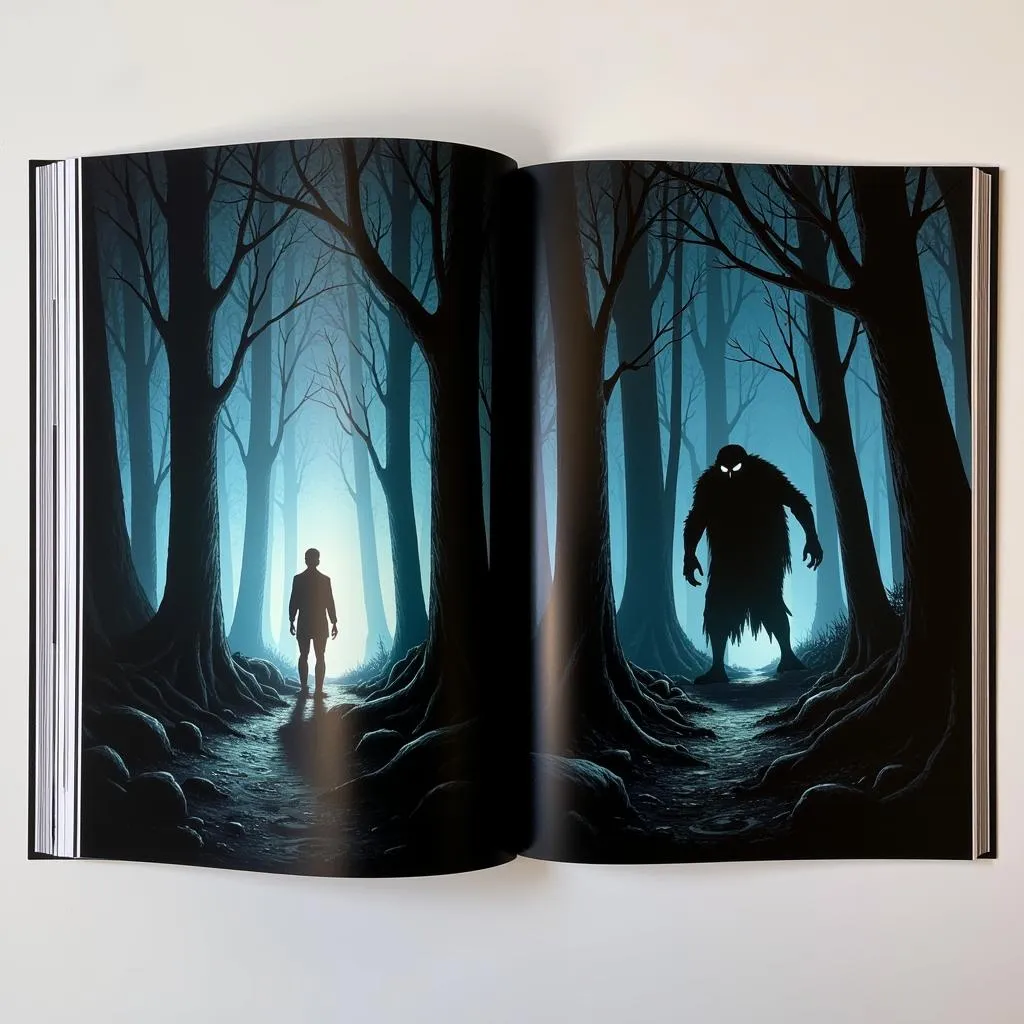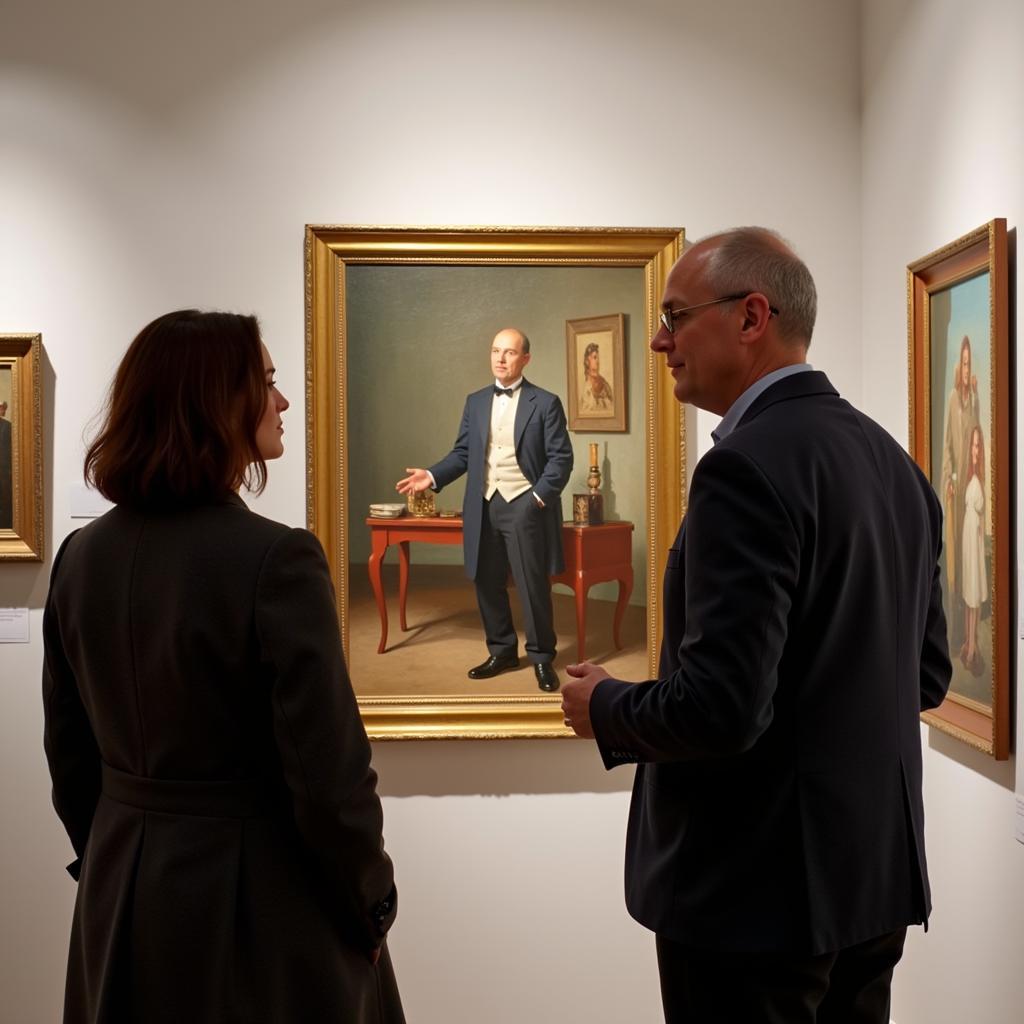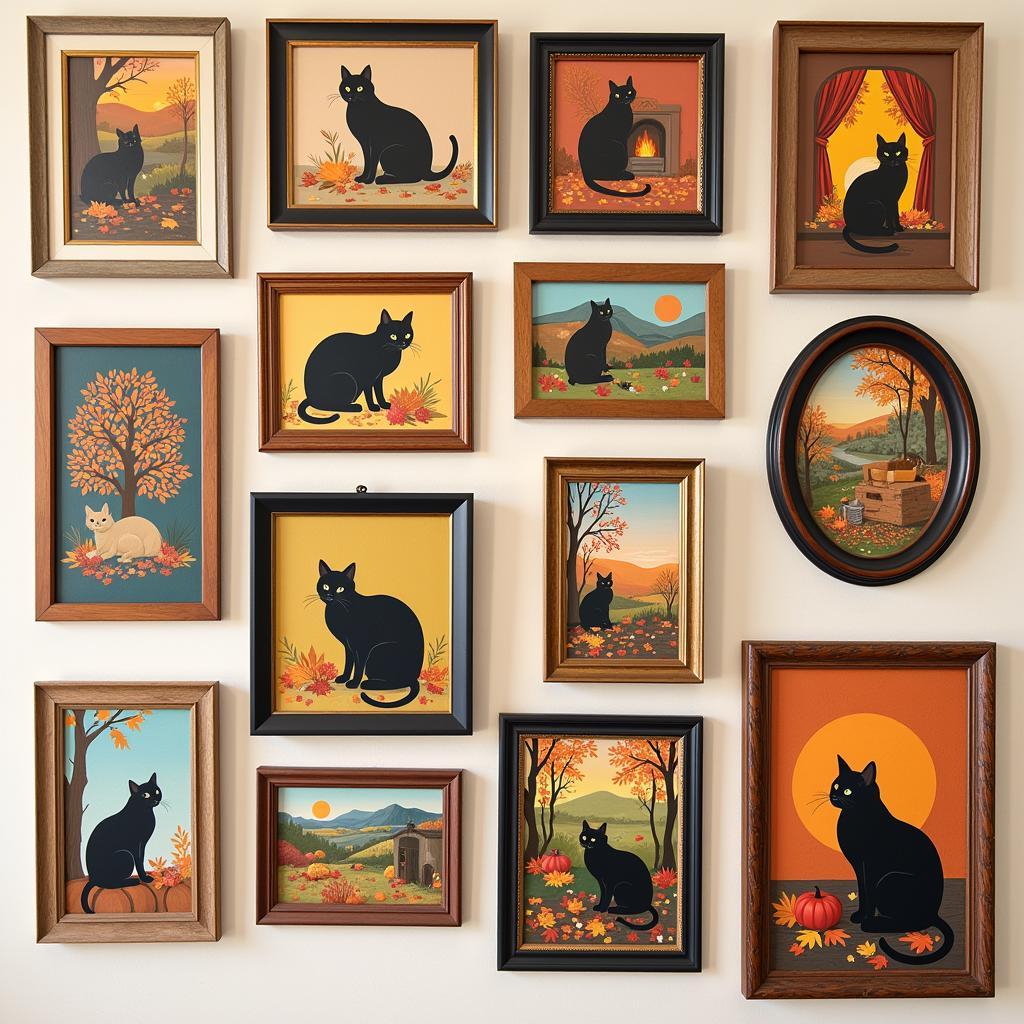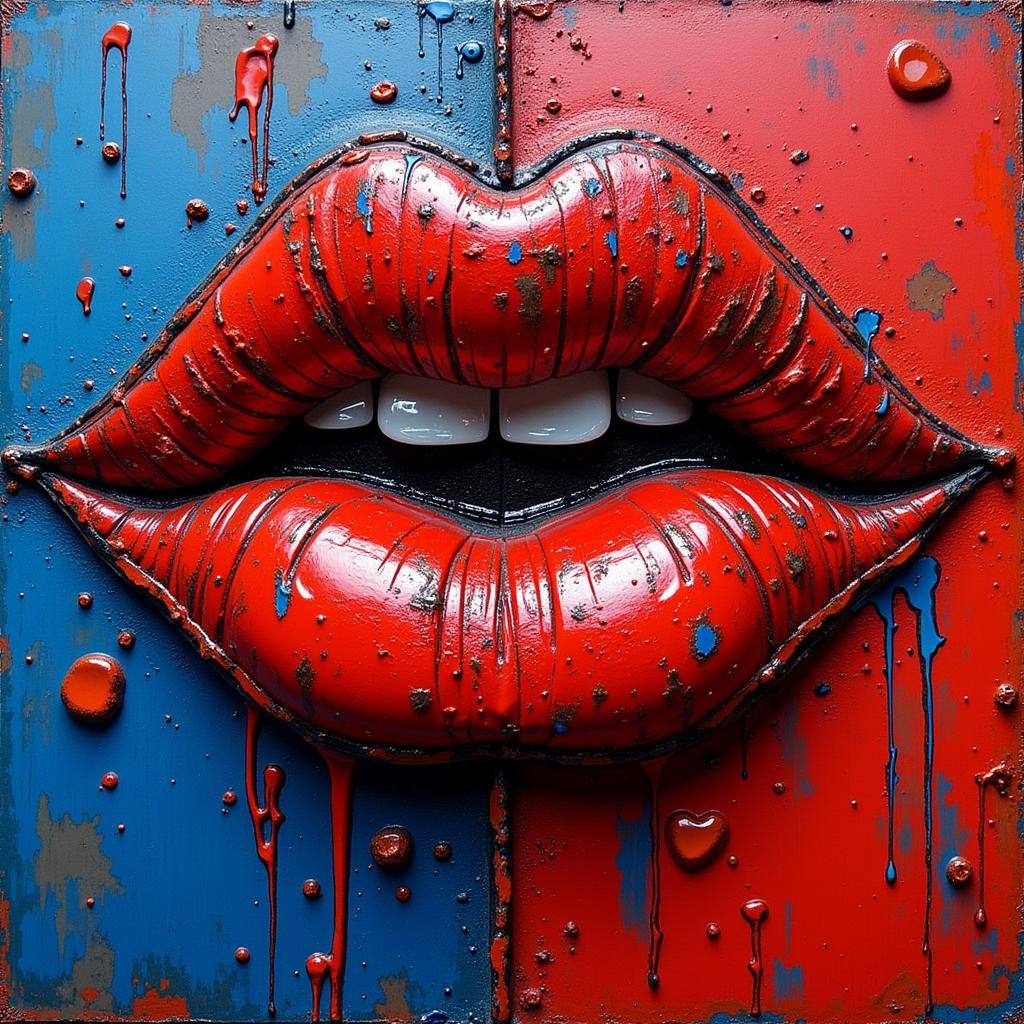Diving Deep into the World of Horror Art Books
Horror Art Books hold a unique place in the artistic landscape, offering a chilling glimpse into the macabre imaginations of talented artists. These visual feasts delve into the darkest corners of our psyche, exploring themes of fear, death, and the unknown through intricate illustrations and captivating narratives. Whether you’re a seasoned horror aficionado or a curious newcomer, the world of horror art books promises a captivating journey into the depths of human imagination.
Unveiling the Allure: Why Horror Art Books Captivate Us
The allure of horror art books lies in their ability to tap into our primal fears and fascinations. These books go beyond the jump scares of movies, offering a deeper exploration of what truly terrifies us. The static nature of illustrations allows for a more intimate and prolonged experience of fear, allowing the reader to linger on the disturbing details and unravel the narrative at their own pace.
The Power of Visual Storytelling in Horror
Unlike traditional novels, horror art books rely heavily on visuals to convey their narratives. This visual storytelling can be incredibly impactful, using composition, color palettes, and character design to evoke a specific emotional response from the reader. The absence of written dialogue can amplify the sense of unease, forcing the reader to interpret the story through the subtle nuances of the artwork.
 The art of visual horror storytelling
The art of visual horror storytelling
Exploring Different Styles and Themes
The world of horror art books encompasses a vast array of artistic styles and thematic explorations. From the grotesque realism of H.P. Lovecraft-inspired art to the surreal and nightmarish visions of Junji Ito’s manga, there’s a subgenre for every taste. Some common themes explored in horror art books include:
- Cosmic Horror: Exploring the vastness and indifference of the cosmos, often featuring ancient entities and cosmic dread.
- Body Horror: Focusing on the grotesque transformation and violation of the human body.
- Gothic Horror: Drawing inspiration from classic Gothic literature, often featuring haunted houses, vampires, and other supernatural beings.
- Folklore and Mythology: Reimagining traditional myths and legends with a dark and unsettling twist.
Collecting and Appreciating Horror Art Books
For those intrigued by the macabre, collecting horror art books can be a rewarding pursuit. These books are not only visually stunning but also serve as a fascinating window into the evolution of horror as a genre.
Finding Your Niche in the World of Horror Art
With countless artists and subgenres to explore, delving into the world of horror art books can feel overwhelming. Here are a few tips for finding your niche:
- Explore Different Artists: Start by researching prominent horror artists like Junji Ito, Mike Mignola, and Bernie Wrightson to get a sense of different artistic styles.
- Identify Your Preferred Themes: Are you drawn to cosmic horror, slasher films, or something in between? Identifying your preferred themes will help you narrow down your search.
- Join Online Communities: Connect with fellow horror art enthusiasts in online forums and social media groups to discover new artists and discuss your favorite books.
The Enduring Legacy of Horror Art
Horror art books continue to captivate and terrify readers, pushing the boundaries of artistic expression and challenging our perceptions of fear. As the genre evolves, we can expect even more innovative and unsettling works that will leave a lasting impact on the world of art and horror alike.




